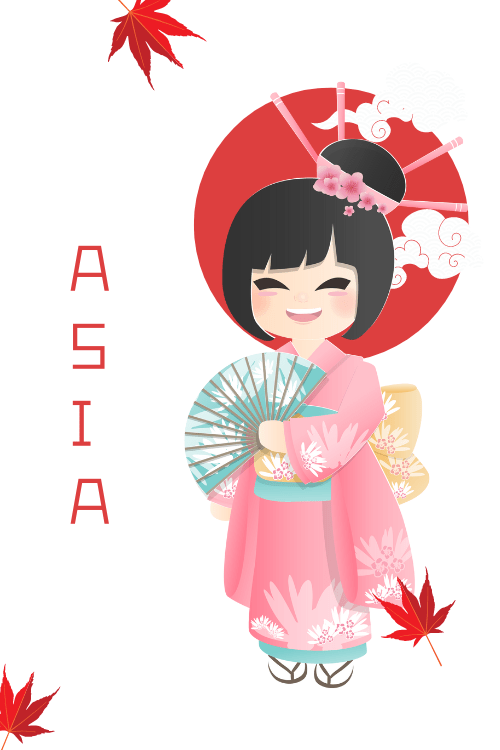eSIM Japan
Can You Text with an eSIM in Japan?
The answer to “can you text with an eSIM in Japan” isn’t yes or no. It’s “it depends on what kind of texting you mean, what phone you have, and what you’re actually trying to accomplish.”
And I’m going to walk you through all of it.
Stop Overpaying in Roaming Fees (Or Wasting Time Hunting for Local SIM Cards)
Overseas travel often means choosing between outrageous roaming charges or scrambling for local SIM cards the moment you land.
One drains your budget. The other steals time away from your holiday.
Smart travelers are now switching over to eSIMs.
eSIMs give you data at a fraction of the cost of what your telco charges for roaming and most modern phones have eSIM technology set up – (although you’ll need to check your phone’s compatibility here).
How eSIM4.com Works:
- Step 1: Pick your destination and data plan
- Step 2: Scan our QR code (takes 3 minutes)
- Step 3: Land overseas with instant local network access
No queues. No tiny plastic cards. No bill shock.
Just seamless, affordable data from the moment you land.
Stop letting phone companies raid your travel budget. Join the smart travelers who’ve already switched.
Get Your eSIM NowThe Quick Answer
Most eSIMs for Japan are data-only. Which means:
What Works Perfectly:
- iMessage (iPhone to iPhone)
- WhatsApp messages and calls
- Telegram, Signal, Facebook Messenger
- Instagram DMs, Snapchat
- Any app-based messaging
What Mostly Doesn’t Work:
- Traditional SMS text messages
- MMS (picture messages via SMS)
- Group texts that include non-iPhone users
- SMS-based two-factor authentication codes
The Exception: Some eSIM providers offer plans that include an actual Japanese phone number with voice and SMS capabilities. These work like a regular SIM card. But they cost more, and for most travelers, they’re unnecessary.
| Your Situation | What You Need | Best Solution |
|---|---|---|
| Messaging friends/family who use iMessage or WhatsApp | Just data | Standard data-only eSIM |
| Need to receive bank 2FA codes or verification texts | SMS capability OR workaround | eSIM with voice/SMS OR Google Voice setup |
| Coordinating with locals (hotels, restaurants) | Depends | WhatsApp works for most; some older businesses prefer SMS |
| Making actual phone calls | Voice capability | eSIM with voice OR use WhatsApp/FaceTime audio |
Internet Messaging vs. SMS
When you buy a data-only eSIM, you’re getting internet access through Japanese cellular networks. Your phone connects to NTT Docomo or SoftBank, and you can browse the web, use apps, and send messages through any internet-based service.
But you’re not getting a phone number.
Which means traditional SMS won’t work.
For iPhone users, this creates an interesting situation: iMessage will work perfectly for messaging other iPhone users, but the moment you try to text someone with an Android phone (or another iPhone user whose iMessage isn’t working), your phone will attempt to fall back to SMS.
And it will fail.
Green bubble = SMS = requires phone number = doesn’t work with data-only eSIM.
For Android users, the situation is slightly more nuanced because of RCS (Rich Communication Services). If you’re using Google Messages and texting another Android user with RCS enabled, those messages go over data—so they’ll work fine with your eSIM. But if RCS isn’t available and your phone falls back to SMS (which happens more often than you’d think), those messages won’t send.
iPhone Users: Your Complete Setup
Let me walk you through exactly how to set this up. I’m going to assume you’re keeping your home SIM active (so you can receive important calls/texts) while using your Japan eSIM for data.
Before You Leave Home:
- Make sure iMessage and FaceTime are set up and working
- Enable Wi-Fi Calling on your home carrier (this lets you receive calls over data)
- Tell your important contacts: “I’ll be in Japan. Use iMessage/WhatsApp to reach me, not regular texts”
- Install your Japan eSIM but don’t activate it yet
When You Land in Japan:
Open Settings. Go to Cellular (or Mobile Data if you’re outside the US).
You’ll see two lines listed:
- Your home carrier SIM
- Your Japan eSIM
Here’s the critical part—you need to set which SIM handles what:
For Cellular Data: Select your Japan eSIM For Default Voice Line: Keep your home SIM For iMessage & FaceTime: Choose your home number
This configuration means:
- All your data usage (web, apps, iMessage) goes through the Japan eSIM
- Your home number stays active for receiving calls (via Wi-Fi Calling over your eSIM data)
- Your iMessages still come from your regular phone number
Now, scroll down to your home SIM and make absolutely sure “Data Roaming” is turned OFF. This prevents your home carrier from quietly connecting to Japanese networks and racking up roaming charges.
The One Mistake That Costs People Money:
Don’t disable your home SIM completely unless you’re 100% certain you don’t need to receive calls or SMS verification codes. Keep it enabled, but turn off its data roaming.
This way, you can still receive important calls and texts through Wi-Fi Calling, and in most cases, you won’t get charged international roaming fees – but for peace of mind, it’s worth checking in with your telco provider to see if inbound calls trigger roaming fees.
If You Need to Receive SMS Codes:
Here’s the frustrating reality: some banks and services only send verification codes via SMS. Your home SIM can receive these as long as it’s still active. But you need to have Wi-Fi Calling enabled with your home carrier before you leave, or these texts might not come through reliably.
Use Yabb.com If You Really Need To Send/Receive Text Messages
The workaround? Use Yabb.com which will allow you to send and receive text messages as well as make international calls.
Android Users: Your Complete Setup
If you’ve researched this topic, you’ve probably noticed something frustrating: most guides assume you have an iPhone. They mention Android in one paragraph, then move on.
RCS
If you’re using Google Messages (which most modern Android phones use as the default), you have RCS. This is Google’s successor to SMS, and it works over data.
That means when you text another Android user who also has RCS enabled, those messages go through your data connection—exactly like iMessage does for iPhone users. You get read receipts, typing indicators, high-quality images, and it all works perfectly with your data-only eSIM.
The Android Problem: SMS Fallback
But here’s where it gets tricky. RCS only works if:
- Both you and the recipient have it enabled
- You both have data connectivity
- Neither of you is using an iPhone
If any of those conditions aren’t met, your messaging app tries to fall back to SMS. And with a data-only eSIM, that SMS message won’t send.
Unlike iPhone users who can clearly see the difference (blue bubble vs. green bubble), you might not immediately realize your message failed to send. It just sits there, showing the “sending” status, until it eventually times out.
Your Setup Process:
Before You Leave:
- Open Settings → Network & Internet → SIMs
- Install your Japan eSIM but don’t activate it yet
- In Google Messages, go to Settings → Chat features, and verify RCS is enabled
- Install WhatsApp if you don’t have it already (it’s the universal backup for international messaging)
- Tell your contacts: “I’ll be in Japan—use WhatsApp or make sure your RCS is on”
When You Land in Japan:
Open Settings → Network & Internet → SIMs.
You’ll see both SIMs listed. Tap on each one and configure:
Mobile data: Set to your Japan eSIM Calls: Set to your home SIM (or Japan eSIM if it includes voice) SMS: Set to your home SIM
Then tap on your home SIM and disable “Mobile data” specifically for that SIM. This prevents accidental roaming charges.
For Samsung Users:
The settings path is slightly different: Settings → Connections → SIM card manager.
The concept is the same—you’re telling your phone to use the Japan eSIM for data while keeping your home SIM available for calls/texts through Wi-Fi Calling.
Choose Your Plan: Scenario-Based Examples
Let’s cut through the generic comparison tables and get specific about what you actually need.
You’re a Solo Leisure Traveler (1-2 Weeks)
You’re sightseeing, taking photos, occasionally checking in with people back home. You don’t need to coordinate complex logistics or make business calls.
What You Need: Data-only eSIM, 3-5GB (unless you’re planning to upload videos to Instagram constantly, in which case go for 10GB)
Messaging Strategy: iMessage or WhatsApp for everyone back home. In Japan, use Google Maps messaging to contact restaurants, or just show up (most tourist spots don’t require reservations).
Recommended: eSIM4’s Japan data plan—connects automatically when you land, covers all major cities and most rural areas, 24/7 support if something goes wrong.
You’re a Business Traveler or Digital Nomad
You’re taking calls. You need to receive verification codes from work systems. You might need to call Japanese clients or partners.
What You Need: eSIM with voice and SMS, or a data-only eSIM plus a calling app solution
Messaging Strategy: Keep everything professional through email and WhatsApp for international contacts. For Japanese contacts, having an actual local number builds credibility and makes logistics smoother.
Recommended: Consider eSIM4’s plans with optional voice/SMS features. You get a Japanese number that works for calls, texts, and verification. More expensive than data-only, but essential for business reliability.
You’re Coordinating a Family or Group Trip
You’re the organizer. You need to keep track of multiple people, make reservations, handle logistics, and stay in constant contact.
What You Need: Data-only eSIM works IF everyone in your group uses WhatsApp or iMessage. If anyone in your group doesn’t, you’ll need SMS capability or you’ll lose coordination.
Messaging Strategy: Create a WhatsApp group before you leave. Set clear expectations: “This is how we’ll communicate in Japan—everyone needs to check this group.” Share your daily locations via live location sharing in WhatsApp.
Recommended: Data-only eSIM with 10-15GB (you’ll be doing more messaging, sharing photos in group chats, using maps constantly). Set up one person as the “communication hub” with a local number eSIM if coordinating with Japanese services.
You’re Staying Long-Term (1+ Months)
You’re working remotely, studying, or doing an extended stay. You need reliable, consistent connectivity that works for everything, not just tourism.
What You Need: eSIM with voice and SMS, higher data allowance, potentially a virtual Japanese phone number
Messaging Strategy: Get a local number. You’ll need it for setting up utilities, dealing with landlords, receiving deliveries, and integrating into local services. WhatsApp works for international friends, but having a Japanese number makes daily life dramatically easier.
Recommended: Start with eSIM4’s voice/SMS plan for the first month. Evaluate actual usage. If you’re staying longer than three months, consider getting a physical Japanese SIM or long-term eSIM plan for better rates.
Troubleshooting: When Things Don’t Work
You’ve set everything up correctly. You land in Japan. And something isn’t working.
Here’s how to fix it.
“My iMessages Are Sending as Green SMS Bubbles”
This means your phone is trying to send via SMS instead of iMessage.
Check:
- Settings → Messages → iMessage is turned ON
- Settings → Cellular → iMessage & FaceTime is set to use your home number
- The recipient is actually an iPhone user with iMessage enabled
If iMessage is on and it’s still sending green, turn










